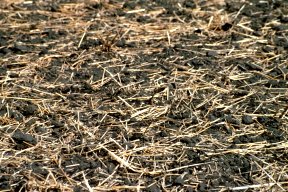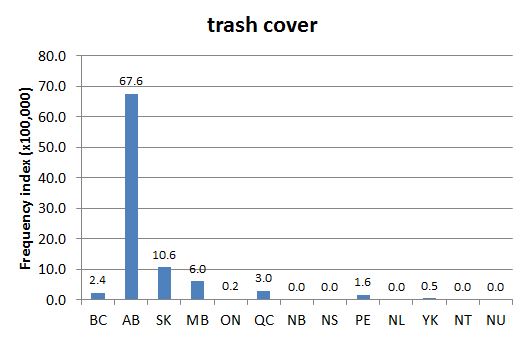DCHP-2
trash cover DCHP-2 (November 2016)
n. — Agriculture, Prairies, especially Alberta
leftover organic material placed on top soil to preserve moisture and prevent erosion (see Image 1).
Type: 1. Origin — Trash cover farming seems to have been first developed in Canada to deal with dust bowl conditions during the Great Depression in the 1930s. William H. Fairfield was superintendent of the Lethbridge Experimental House (see AARD reference), one of six stations developed by the Dominion Department of Agriculture to address problems such as drought and erosion (see Archives Canada reference). Fairfield, hailing from Pennsylvania, was responsible for introducing trash cover farming in Alberta. The practice quickly became popular throughout the Prairies. Database searches suggest that the term was first used in Canada (see the 1935 quotation), where it is most prevalent today (see Chart 1), specifically in the Prairie province of Alberta (see Chart 2).
See also COD-2, s.v. "trash cover", which is marked "Cdn".References:
- AARD "Fairfield, William H. - 1974 Hall of Fame Inductee" Accessed 9 May 2013
- Archives Canada "Lethbridge Research Station" Accessed 9 May 2013
- COD-2
Images:

Image 1: Trash cover over a field. Photo: Gaia Consulting Ltd., http://www.gov.mb.ca
Chart 1: Internet Domain Search, 12 Oct. 2012
Chart 2: Regional Domain Search, 9 May 2013

